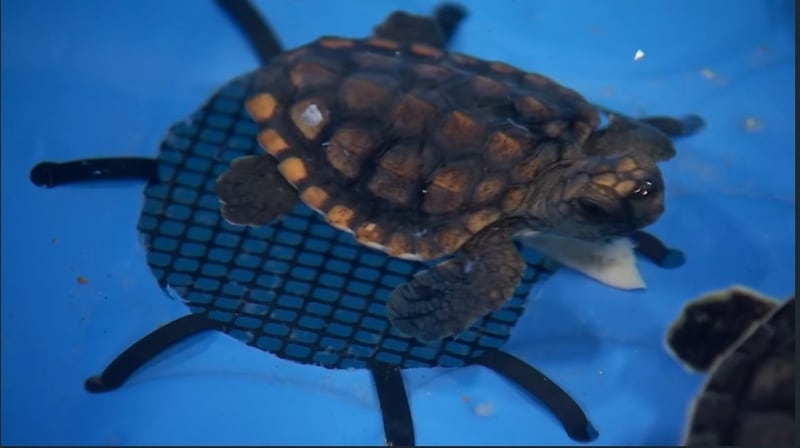ORLANDO, Fla. — In her lab, just off the main campus at Florida Atlantic University, biologist Jeanette Wyneken likes to quip, "Hot chicks and cool dudes."
It’s her way of explaining how sea turtles breed.
When a turtle's nest is cool, most of the hatchlings will be male.
When a nest is warm, most of the hatchlings will be female. But the quip is also a warning of what could be a species in decline.
"In the last decade, we’ve had seven years of 100% females," Wyneken said.
TRENDING NOW:
- Husband of Ohio woman killed by dogs: 'I never wanted Great Danes, but she wanted to rescue them'
- LeBaron slayings: Several family members, including 4 children, killed in Mexico, relatives say
- 3 killed in string of deadly shootings in Palm Bay
- Decorating for Christmas already? Science says you're a happy person
Warming seas and sand temperatures are shifting the balance in sea turtle populations, creating generations with almost no male turtles.
"The eggs can’t get away from the heat, so if it gets too warm, they’re stuck, and if it gets too warm, we see dead embryos. If it gets just a little too warm, we see all female hatchlings coming out of that nest," Wyneken said. "There is a little tiny zone between death and all females."
The team at FAU has been studying leatherback and green sea turtles, collecting hatchlings from nests along the Florida coast, raising them in special tanks, and then checking their sex.
In typical conditions, a nest temperature between 80 and 85 will produce mostly male turtles, 85 and 88 will produce mainly females with an occasional male, and above 88 degrees will produce all females.
Read: Spot a wayward baby sea turtle along the Florida coast? Here’s how you can help
"We never used to see a nest go above 93 or 94," Wyneken said. "Now we’re seeing nests above 97, and those may not produce hatchlings at all."
Because it takes sea turtles almost 25 years to reach sexual maturity, the waves of all female hatchlings will not start to show up in breeding patterns for several more years.
But since 99 percent of turtle hatchlings end up as food for other marine life, a reduction in eggs laid and hatched will disrupt the food chain for other species.
In a normal evolutionary cycle sea turtles, which have been around for 110 million years, would adapt to the changing environment.
But because Earth is warming faster than the turtles can adapt, their eggs are hatching as all female, if they hatch at all.
"The turtles are telling us something," Wyneken said. "They are telling us that it is getting hotter. They are telling us that they are dying because the nests are getting too hot."
Listen to Heath discuss the threats that sea turtles face on "Orlando's Morning News with Joe Kelley" below:
Read more about sea turtle below:
- Plastic kills 100% of dead baby turtles at Florida rescue; 104 pieces found in one
- Time to shell-ebrate: Rehabbed turtle heads back out to sea in Brevard County
- Volunteers scour Cocoa Beach for displaced sea turtles, eggs after Hurricane Dorian
DOWNLOAD: Free WFTV News & Weather Apps
Not near a TV? Click here to watch WFTV newscasts live
Cox Media Group







